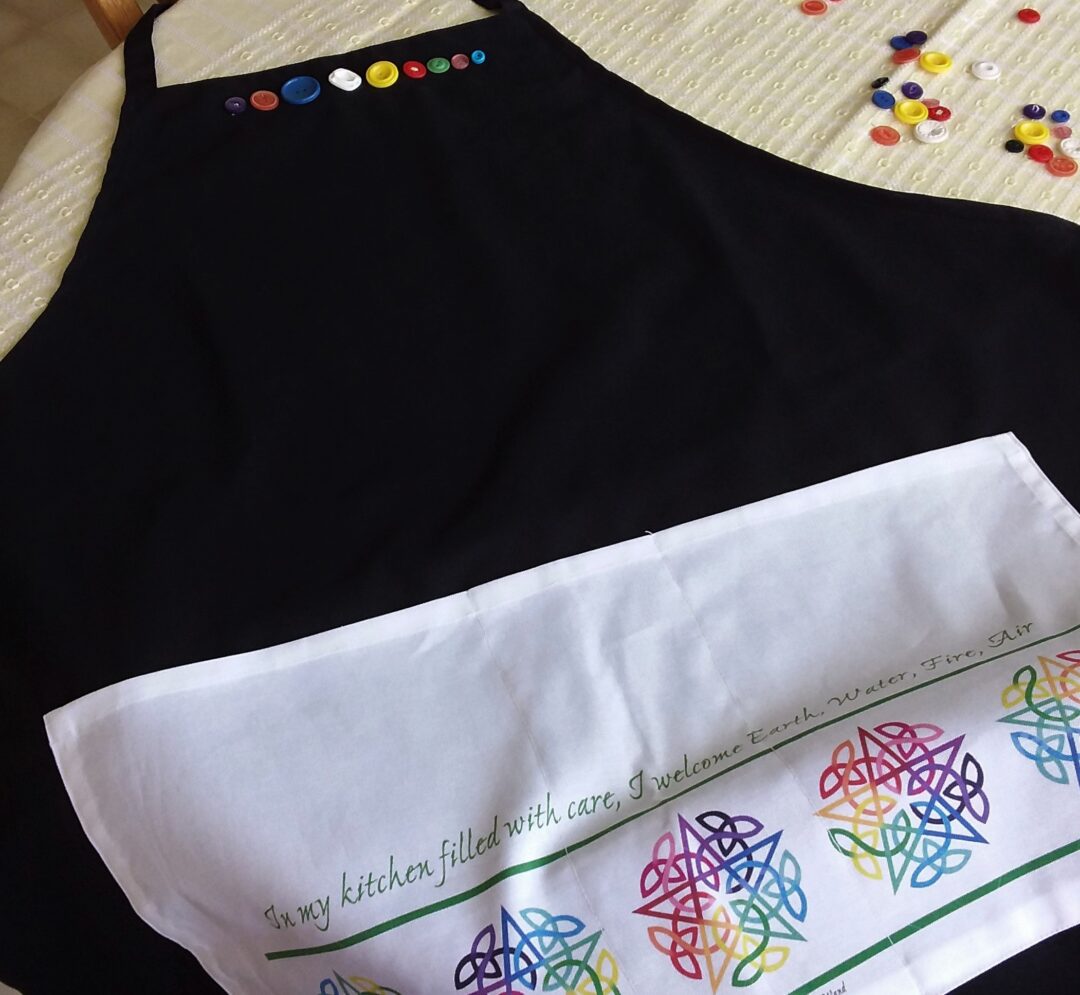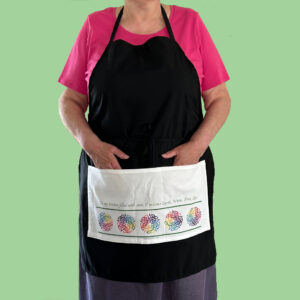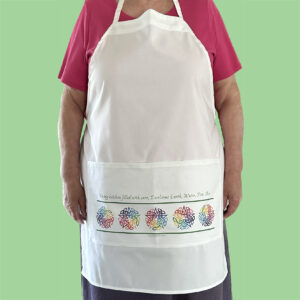A Little Background
The pockets on these chefs aprons were a misaligned printing of our Celtic Pentagram tea towels. The pretty borders were properly printed, just in the wrong position and using the borders this way is a great solution for those of you asking about aprons.
Only eleven borders and therefore only 11 aprons are available. The apron itself comes in black or white polyester and all the pockets are white cotton. The black aprons have been through the washing machine on warm several times and there was no bleeding of colour.
The ties are elastic and long enough that they can come around the front and be tied at the waist. I found the neck section to be a little large so there is also a little tuck that helps the bib ride a little higher at the back of the neck. It can be easily cut apart if you prefer more space.
Black Apron $30.00 Canadian
White Apron $30.00 Canadian SOLD OUT
Coming with each apron is a package of buttons in complementary colours. History suggests that buttons were originally decorative. Along the way someone explored additional possibilities and solutions, making them functional.
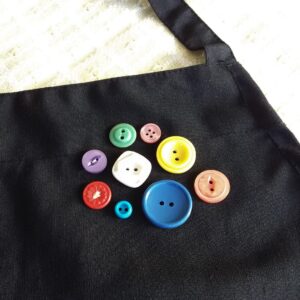 Buttons are often intended to symbolize making choices to our environment and for ourselves through wisdom and self-control. Another interpretation is in the areas of protection and closure. Symbols are an archetypal language and your intuitive reactions add another valuable layer of personal meaning.
Buttons are often intended to symbolize making choices to our environment and for ourselves through wisdom and self-control. Another interpretation is in the areas of protection and closure. Symbols are an archetypal language and your intuitive reactions add another valuable layer of personal meaning.
Most buttons are mass produced these days (which is a skill in itself) but originally they were made by hand and that required focused attention and fine detail skills. For those reasons a personal 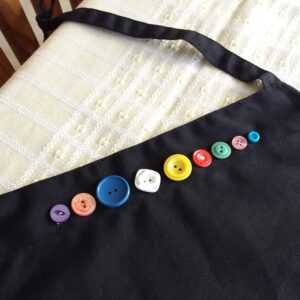 interpretation of mine is craftsmanship and innovative success.
interpretation of mine is craftsmanship and innovative success.
Whether you chose to sew the buttons onto your apron is up to you. They can be added as a bit a colourful decorative whimsy or they can be mixed and/or replaced with buttons from people and outfits that mean a lot to you.
They can also become a set of symbols thought of as kitchen witch regalia. There are many ways in which cultures across the world incorporate patches, ribbons, feathers, pins, bells, buttons and other items onto significant materials to symbolize membership. Commencement ceremonies, military rituals, First Nations dancers and royalty are examples of places where what is worn goes beyond costume to a place of deeper meaning.
Pam Grossman explains it this way, ” certainly you have people who are using these symbols with a lot of knowledge and intention, and then you have other people who wear it on a t-shirt because they think it looks cool.”
How about intentional coolness?

